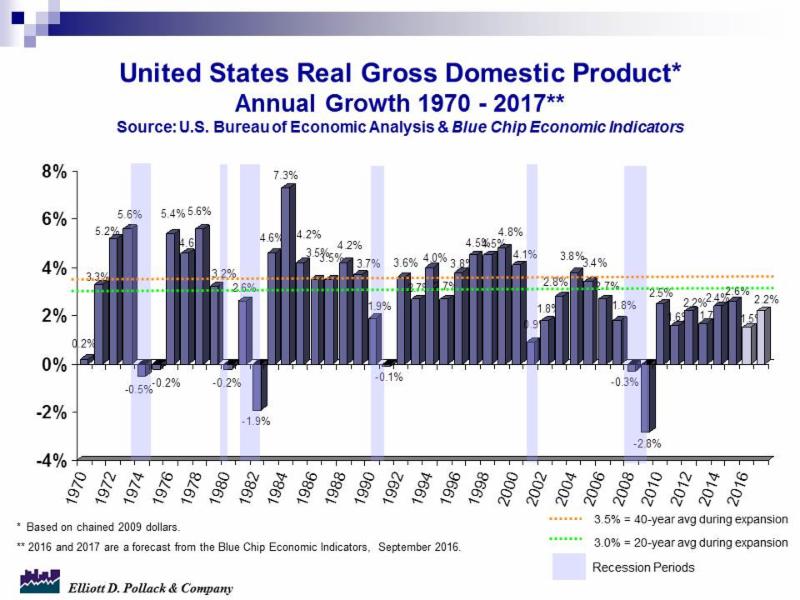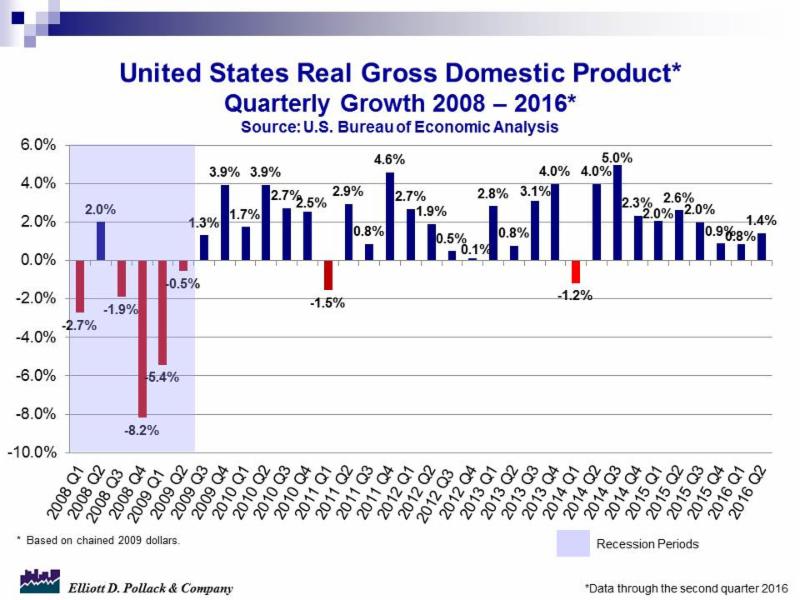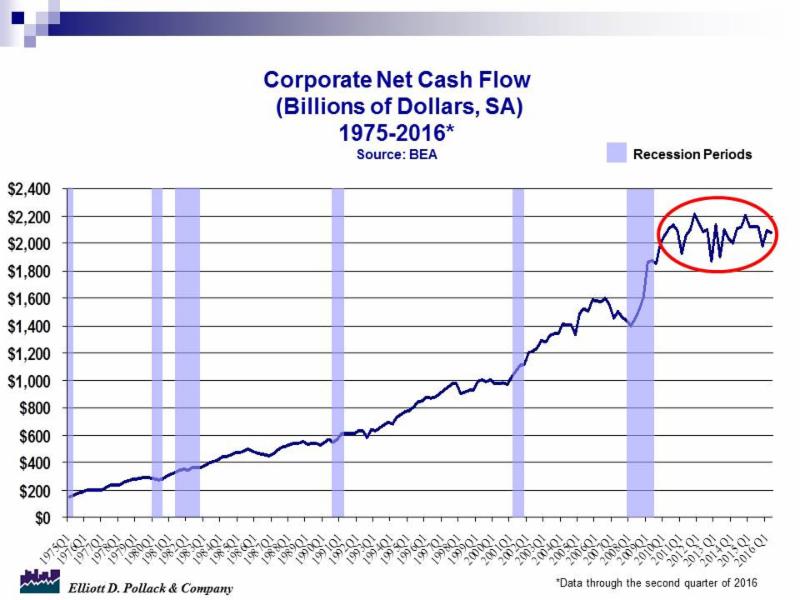Well, at least we are still expanding. That’s the good news. But, the latest data from the Bureau of Economic Analysis shows that this is probably the slowest expansion in American history.
Just how slow this expansion has been can be seen by the latest GDP release. Real gross domestic product increased at an annual rate of just 1.4% in the second quarter of 2016. This follows growth rates of just 0.9% in the 4th quarter of 2015 and 0.8% in the 1st quarter of 2016. To put this in perspective, the average annualized quarterly growth rate in the March 1991-March 2001 expansion was 3.6%. In the November 2001-December 2007 expansion, the rate was 2.8%. Until this cycle, that had been the slowest post-war recovery. Other post-war expansions have averaged 3.2%-6.2% at an annual rate.
Even jobs have grown at a rate that is the slowest on record.
This dismal record is a result of, among other things, bad economic policy. This includes higher taxes on both individuals and corporations, costly and oppressive regulations, barriers to international trade and barriers to credit creation. Whoever wins the election must change these policies or the results we have seen will continue.
In other news, despite what appears to be an agreement by OPEC members to constrain supply by about 2%, it remains to be seen if oil prices rise much. That will depend on many factors including how non-OPEC members react and how long such a decline in output by OPEC members actually lasts.
The overall data suggests that the current expansion will still continue. Personal income continues to grow. Consumer confidence is up. New home sales are up from a year ago. Home prices continue to recover. And closer to home, statewide lodging statistics continue to improve.















